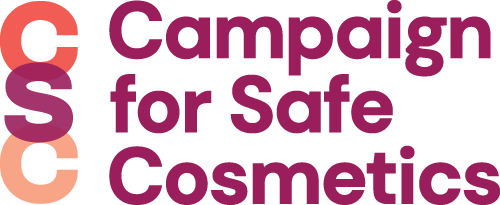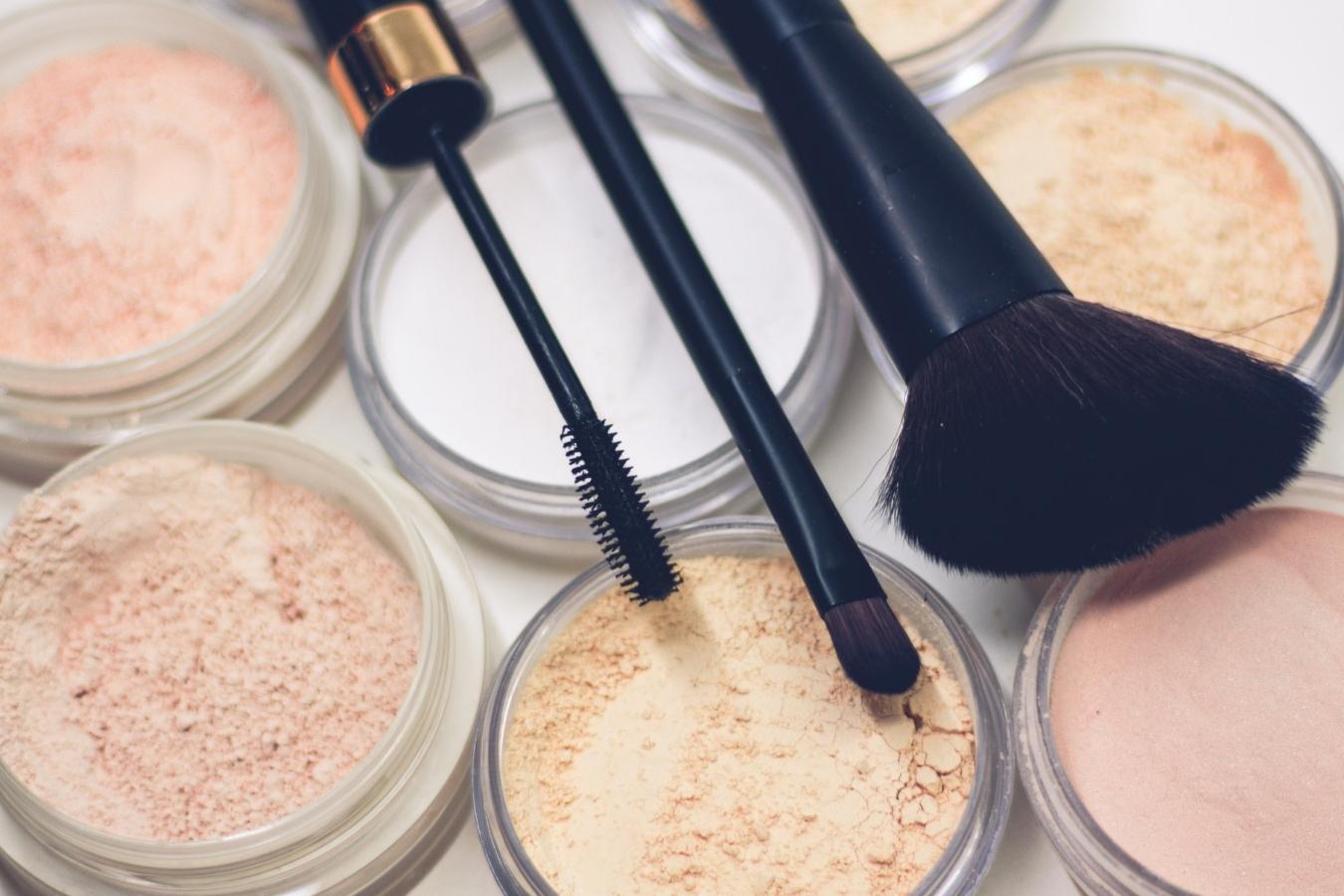[1] FDA: U.S. Food and Drug Administration. Nanotechnology. 2016. Available online: http://www.fda.gov/Cosmetics/ScienceResearch/Nanotech/default.htm. Accessed April 19, 2022.
[2] CDC: Centers for Disease Control. Nanotechnology. 2016. Available online: http://www.cdc.gov/niosh/topics/nanotech/default.html. Accessed April 19, 2022.
[3] NIH: National Institute of Environmental Health Sciences. Nanomaterials. 2016. Available online: https://www.niehs.nih.gov/health/topics/agents/sya-nano/index.cfm. Accessed April 19,2022.
[4] Friends of the Earth Report – Nanomaterials, Sunscreens and Cosmetics: Small Ingredients Big Risks. Available online: http://www.foe.org. Accessed April 19,2022.
[5] NIH: National Institute of Environmental Health Sciences. Nanomaterials. 2016. Available online: http://www.niehs.nih.gov/health/topics/agents/sya-nano/. Accessed April 19,2022.
[6] NIH: National Institute of Environmental Health Sciences. Nanomaterials. 2016. Available online: http://www.niehs.nih.gov/health/topics/agents/sya-nano/. Accessed April 19,2022.
[7] CDC: Centers for Disease Control. Nanotechnology. 2016. Available online: http://www.cdc.gov/niosh/topics/nanotech/default.html. Accessed April 19,2022.
[8] Ryman-Rasmussen JP, Riviere JE, Monteiro-Riviere NA. Penetration of intact skin by quantum dots with diverse physicochemical properties. Toxicological Sciences. 2006 May 1;91(1):159-65.
[9] Semmler M, Seitz J, Erbe F, Mayer P, Heyder J, Oberdorster G, et al. Long-term clearance kinetics of inhaled ultrafine insoluble iridium particles from the rat lung, including transient translocation into secondary organs.Inhal Toxicol 2004: 16(6-7):453-9.
[10] Semmler-Behnke M, Takenaka S, Fertsch S, Wenk A, Seitz J, Mayer P, et al. Efficient elimination of inhaled nanoparticles from the alveolar region: evidence for interstitial uptake and subsequent reentrainment onto airways epithelium. Environ Health Perspect. 2007 May; 115(5):728-33.
[11] Oberdörster G, Sharp Z, Atudorei V, Elder A, Gelein R, Kreyling W, et al. Translocation of inhaled ultrafine particles to the brain. Inhal Toxicol 2004; 16:437-445.
[12] Elder A, Gelein R, Silva V, Feikert T, Opanashuk L, Carter J et al. Translocation of inhaled ultrafine manganese oxide particles to the central nervous system. Environ Health Perspect 2006; 114(8):1172-1178.
[13] Kreyling WG, Semmler-Behnke M, Möller W. Health implications of nanoparticles. J Nanopart Res 2006a;8:543-562.
[14] Semmler M, Seitz J, Erbe F, Mayer P, Heyder J, Oberdorster G, et al. Long-term clearance kinetics of inhaled ultrafine insoluble iridium particles from the rat lung, including transient translocation into secondary organs.Inhal Toxicol 2004: 16(6-7):453-9.
[15] Nemmar A, Hoet PH, Vanquickenborne B, Dinsdale D, Thomeer M, Hoylaerts MF, et al. Passage of inhaled particles into the blood circulation in humans. Circulation 2002a; 105(4):411-414.
[16] Nemmar A, Hoylaerts MF, Hoet PH, Dinsdale D, Smith T, Xu H, et al. Ultrafine particles affect experimental thrombosis in an in vivo hamster model. Am J Respir Crit Care Med 2002b; 166(7):998-1004.
[17] Oberdörster G, Sharp Z, Atudorei V, Elder A, Gelein R, Lunts A, et al. Extrapulmonary translocation of ultrafine carbon particle following whole-body inhalation exposure of rats. J Toxicol Environ Health 2002; 65(20):1531-1543.
[18] Kreyling W, Semmler M, Erbe F, Mayer P, Schulz H, Oberdorster G, et al. Translocation of ultrafine insoluble iridium particles from lung epithelium to extrapulmonary organs is size dependent but very low. J Toxicol Environ Health 2002; 65(20):1513-1530.
[19] Khandoga A, Stampfl A, Takenaka S, Schulz H, Radykewicz R, Kreyling W, Krombach F. Ultrafine particles exert prothrombotic but not inflammatory effects on the hepatic microcirculation in healthy mice in vivo. Circulation 2004; 109(10):1320-1325.
[20] Nemmar A, Hoylaerts MF, Nemery B. Effects of particulate air pollution on hemostasis.Clin Occup Environ Med. 2006;5(4):865-81.
[21] Bai N, Khazaei M, van Eeden SF, Laher I. The pharmacology of particulate matter air pollution-induced cardiovascular dysfunction. Pharmacol Ther 2007;113(1):16-29.
[22] Xia T, Kovochich M, Brant J, Hotze M, Sempf J, Oberley T, et al. Comparison of the abilities of ambient and manufactured nanoparticles to induce cellular toxicity according to an oxidative stress paradigm. Nano Lett 2006; 6(8):1794-1807.
[24] European commission. Safety of Nanomaterials in Cosmetic Products. 2007. Available online: http://ec.europa.eu/health/ph_risk/committees/04_sccp/docs/sccp_o_123.pdf. Accessed April 19, 2022.
[25] Oberdörster G. Pulmonary effects of inhaled ultrafine particles. Int Arch Occup Environ Health 2001; 74(1):1-8.
[26] Sager TM, Kommineni C, Castranova V. Pulmonary response to intratracheal instillation of ultrafine versus fine titanium dioxide: role of particle surface area. Part Fibre Toxicol 2008; 5: 17.
[27] Borm PJ, Robbins D, Haubold S, Kuhlbusch T, Fissan H, Donaldson K et al. The potential risks of nanomaterials: a review carried out for ECETOC, Particle and Fibre Toxicology 2006, 3:11. More information available online: http://ec.europa.eu/health/ph_risk/committees/04_sccp/docs/sccp_o_123.pdf. Accessed April 19, 2022.
[28] SCCNFP/0005/98 (Scientific Committee on Cosmetic Products and Non-Food Products) Titanium Dioxide, adopted by the SCCNFP during the 14th plenary meeting of 24 October 2000.
[29] Gamer AO, Leibold E, van Ravenzwaay B. The in vitro absorption of microfine zinc oxide and titanium dioxide through porcine skin. Toxicol In Vitro. 2006;20(3):301-7.
[30] Lademann J, Weigmann H, Rickmeyer C, Barthelmes H, Schaefer H, Mueller G, et al. Penetration of titanium dioxide microparticles in a sunscreen formulation into the horny layer and the follicular orifice. Skin Pharmacol Appl Skin Physiol 1999;12(5):247-56.
[31] Ferin J, Oberdoerster G, Penney DP. Pulmonary retention of ultrafine and fine particles in rats. Am J Respir Cell Mol Biol 1992; 6(5):535-42. More information available online: http://ec.europa.eu/health/ph_risk/committees/04_sccp/docs/sccp_o_123.pdf. Accessed April 19,2022.
[32] Grassian VH, O’Shaughnessy PT, Adamcakova-Dodd A, Pettibone JM, Thorne PS. Inhalation exposure study of titanium dioxide nanoparticles with a primary particle size of 2 to 5 nm. Environmental health perspectives. 2007 Mar 1:397-402.
[33] Gurr JR, Wang AS, Chen CH, Jan KY. Ultrafine titanium dioxide particles in the absence of photoactivation can induce oxidative damage to human bronchial epithelial cells. Toxicology. 2005 Sep 15;213(1):66-73.
[34] Trouiller B, Reliene R, Westbrook A, Solaimani P, Schiestl RH. Titanium dioxide nanoparticles induce DNA damage and genetic instability in vivo in mice. Cancer research. 2009 Nov 15;69(22):8784-9.
[36] Schilling K, Bradford B, Castelli D, Dufour E, Nash JF, Pape W, Schulte S, Tooley I, van den Bosch J, Schellauf F. Human safety review of “nano” titanium dioxide and zinc oxide. Photochemical & Photobiological Sciences. 2010;9(4):495-509.
[37] Hussain SM, Hess KL, Gearhart JM, Geiss KT, Schlager JJ. In vitro toxicity of nanoparticles in BRL3A rat liver cells. Toxicol In Vitro 2005; 19(7): 975-983.
[38] McAuliffe ME, Perry MJ: Are nanoparticles potential male reproductive toxicants? A literature review. Nanotechnology 1:204-210, 2007.
[39] Xia T, Kovochich M, Brant J, Hotze M, Sempf J, Oberley T, Sioutas C, Yeh JI, Wiesner MF, Nel AE: Comparision of the abilities of ambient and manufactured nanoparticles to induce cellular toxicity according to an oxidative stress paradigm. Nano Lett. 8:1794-1807, 2006.
[40] European Commission. Opinion on safety of nanomaterials in cosmetic products. 2007. Available online: http://ec.europa.eu/health/ph_risk/committees/04_sccp/docs/sccp_o_123.pdf. Accessed April 19, 2022.
[41] Rouse JG, Yang J, Ryman-Rasmussen JP, Barron AR, Monteiro-Riviere NA. Effects of mechanical flexion on the penetration of fullerene amino acid-derivatized peptide nanoparticles through skin. Nano Lett 2007; 7(1):155-60.
[42] Miyata N, Yamakoshi Y, Nakanishi I. Reactive species responsible for biological actions of photoexited fullerenes. Yagaku Zasshi 2000;120: 1007-1016.
[43] Yamakoshi Y, Umezawa N, Ryu A, Arakane K, Miyata N, Goda Y, et al. Active oxygen species generated from photoexcited fullerene (C60) as potential medicines: O2-* versus 1O2. J Am Chem Soc 2003;125:12803-12809.
[44] Yamashita K, Yoshioka Y, Higashisaka K, Mimura K, Morishita Y, Nozaki M, Yoshida T, Ogura T, Nabeshi H, Nagano K, Abe Y. Silica and titanium dioxide nanoparticles cause pregnancy complications in mice. Nature nanotechnology. 2011 May 1;6(5):321-8.
[45] Wang JJ, Sanderson BJS, Wang H. Cyto- and genotoxicity of ultrafine TiO2 particles in cultured human lymphoblastoid cells. Mutat Res 2007; 628: 99-106.
[46] Shukla A, Timblin C, BeruBe K, Gordon T, McKinney W, Driscoll K, et al.Inhaled particulate matter causes expression of nuclear factor (NF)-kappaB-related genes and oxidant dependent NF-kappaB activation in vitro. Am J Respir Cell Mol Biol 2000; 23: 182-187.
[47] Yamawaki H, Iwai N. Cytotoxicity of water-soluble fullerene in vascular endothelial cells. Am J Physiol Cell Physiol 2006; 290: C1495-C1502.
[48] Driscoll E, Deyo LC, Carter JM, Howard BW, Hassenbein G, Bertram TA. Effect of particle exposure and particle-elicited inflammatory cells on mutation in rat alveolar epithelial cells. Carcinogenesis 1997; 18: 423-430.
[49] FDA: U.S. Food and Drug Administration. Nanotechnology. 2016. Available online: http://www.fda.gov/Cosmetics/ScienceResearch/Nanotech/default.htm. Accessed April 19, 2022.
[50] European Commission. Cosmetic products – specific topics: nanomaterials. Available online: http://ec.europa.eu/growth/sectors/cosmetics/products/nanomaterials_en. Accessed April 19, 2022.


































